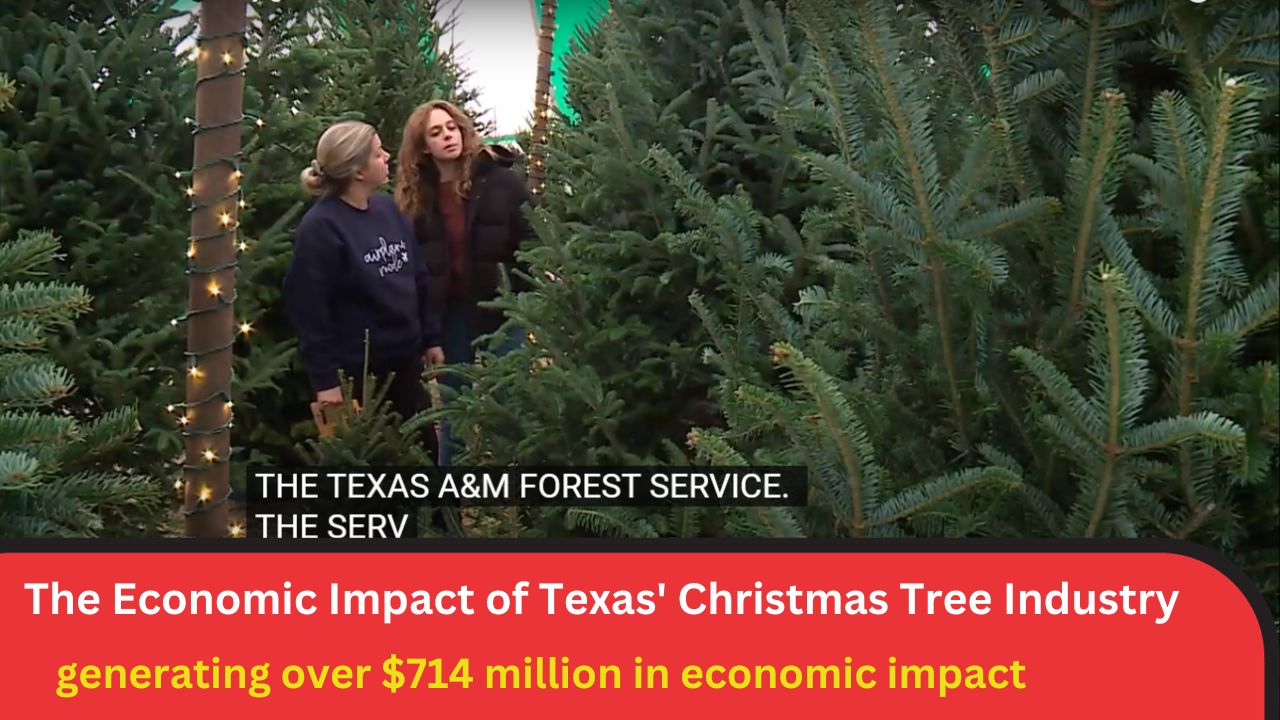The Christmas tree industry is a significant contributor to the Texas economy, generating over $714 million in economic impact in 2022, according to the Texas A&M Forest Service. This impressive figure encompasses direct, indirect, and induced impacts, demonstrating the industry’s far-reaching economic influence.
Direct Impacts
The Texas Christmas tree industry’s direct economic impact, which includes the value of trees sold and related expenses, amounted to $397 million in 2022. This figure represents the income generated by Christmas tree farms, nurseries, and retailers directly involved in the sale and production of Christmas trees.
Indirect Impacts
Indirect impacts refer to the spending generated by the Christmas tree industry’s activities on goods and services from other sectors of the economy. For instance, the transportation of trees to retail outlets, advertising campaigns, and the purchase of tools and equipment for Christmas tree farms all contribute to indirect impacts. In 2022, indirect impacts from the Texas Christmas tree industry totaled $210 million.

Induced Impacts
Induced impacts are broader economic effects caused by the spending of individuals who earn income from the Christmas tree industry. These individuals use their earnings to purchase goods and services, further stimulating the economy. In 2022, induced impacts from the Texas Christmas tree industry reached $107 million.
Job Creation
The Texas Christmas tree industry’s economic impact is further amplified by the jobs it supports. In 2022, the industry employed nearly 6,000 people across the state, providing valuable employment opportunities in rural communities.
Popularity of Real Christmas Trees
Real Christmas trees remain a cherished tradition in many households, with Texans embracing the festive ambiance and symbolism they bring. The Texas A&M Forest Service estimates that over four million real Christmas trees are sold annually statewide, further contributing to the industry’s economic significance.
Decline in Real Christmas Tree Sales
Despite their popularity, real Christmas tree sales have shown a downward trend since 2018. This decline can be attributed to several factors, including the growing popularity of artificial Christmas trees, rising tree prices, and the convenience of pre-cut trees.
Sustainability Benefits of Real Christmas Trees
Real Christmas trees offer several sustainability advantages over their artificial counterparts. Once a real tree has served its seasonal purpose, it can be repurposed for a variety of practical uses, such as mulching, bird nesting materials, and natural habitat construction for fish and wildlife.
Environmental Contributions of Christmas Tree Farms
Christmas tree farms play an important role in sustainable forest management. These farms are essentially young forests that provide the same environmental benefits as traditional forests, including carbon sequestration, wildlife habitat, water filtration, and recreational opportunities.
Conclusion
The Texas Christmas tree industry is a significant economic engine for the state, contributing over $700 million to the economy and supporting nearly 6,000 jobs. The industry’s direct, indirect, and induced impacts ripple through the economy, fostering economic activity across diverse sectors. Despite the recent decline in real Christmas tree sales, the industry remains a beloved tradition, and its sustainability benefits align with growing environmental concerns. As the world transitions towards more eco-friendly practices, the Texas Christmas tree industry is well-positioned to continue its valuable contributions to the state’s economy and environmental stewardship.









